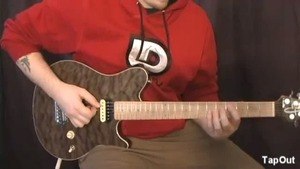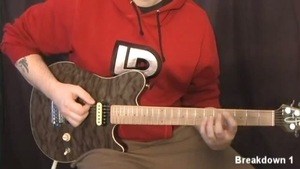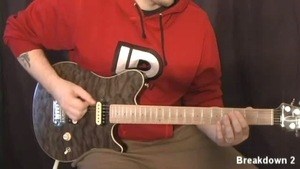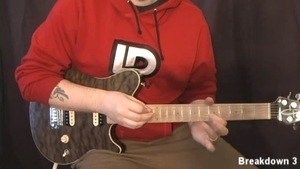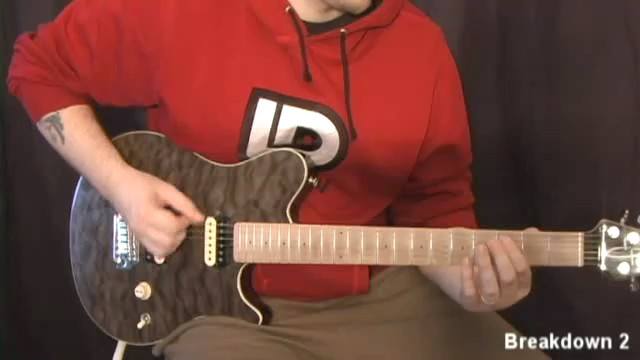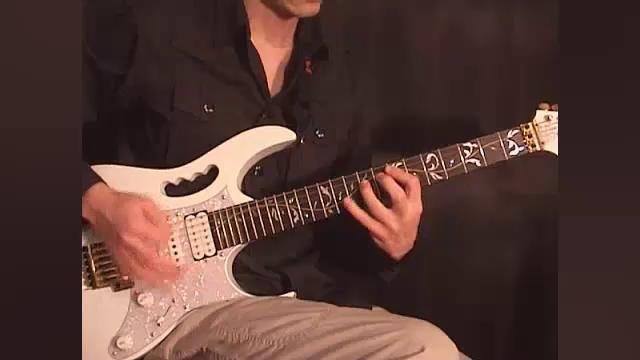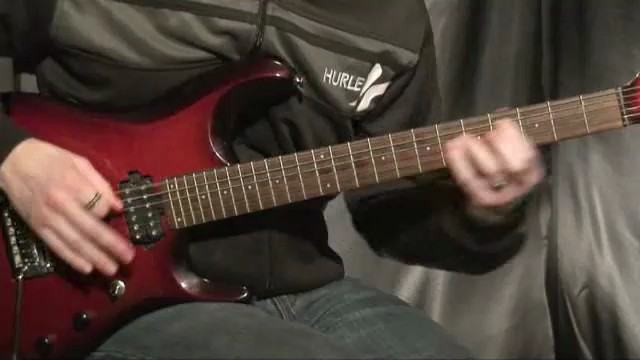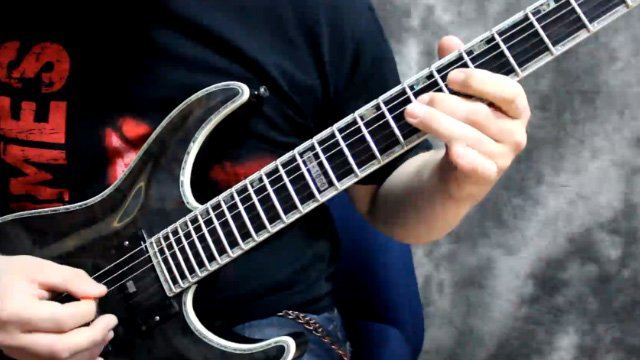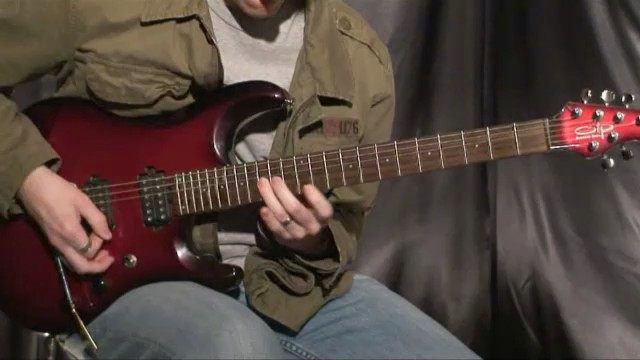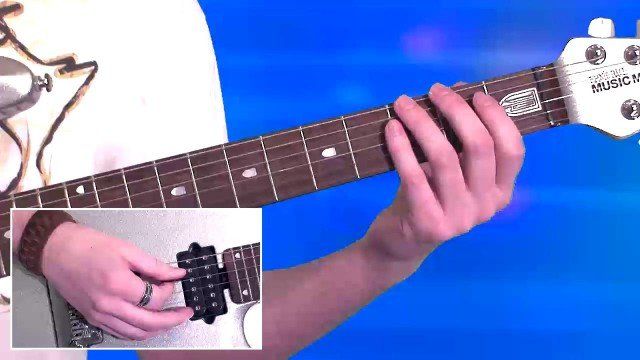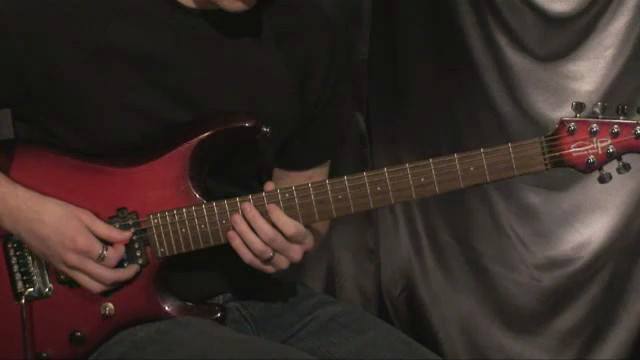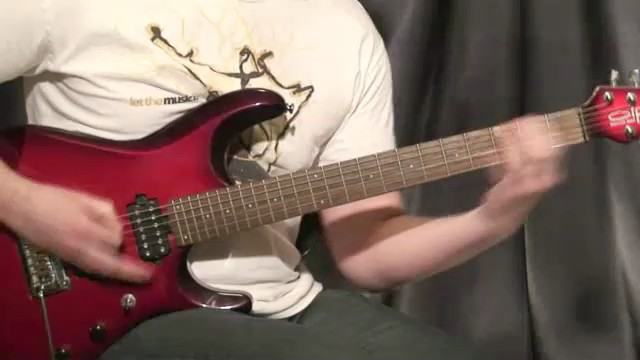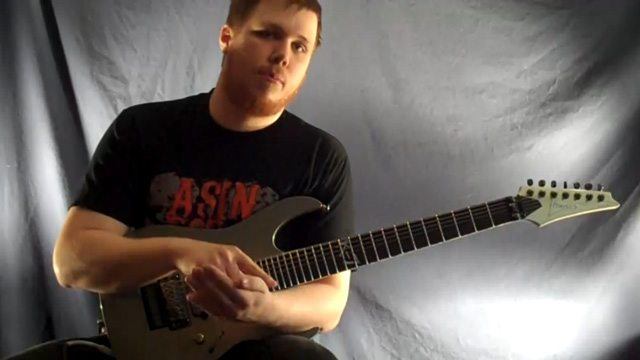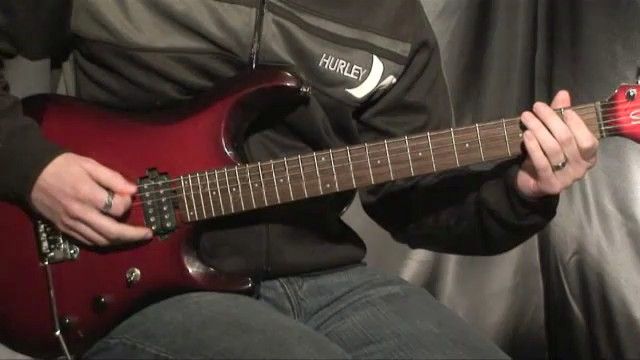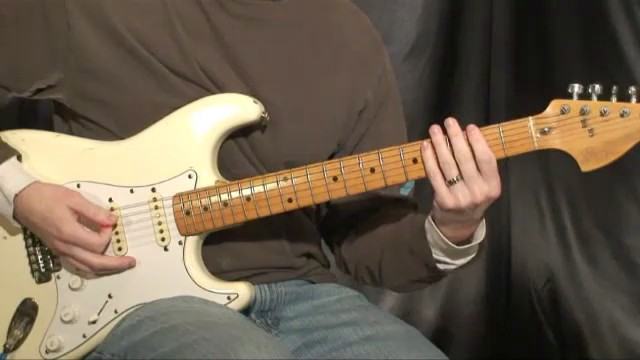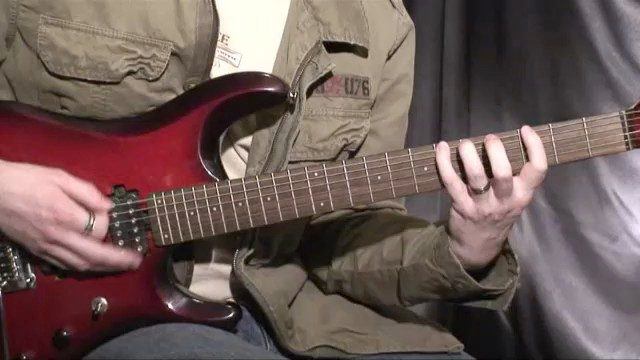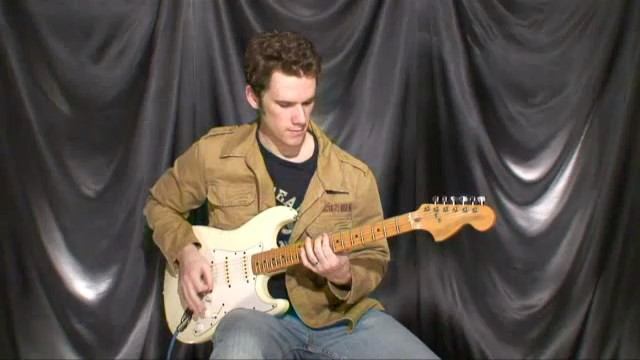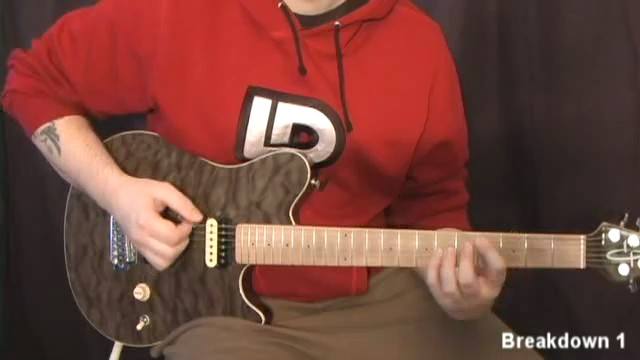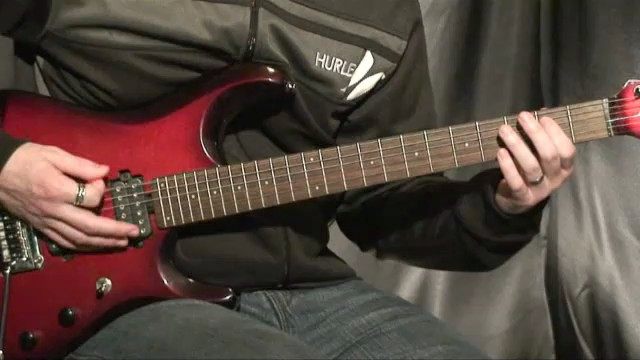In this part, I'm using a rather un-orthodox harmonic technique. The actual physics of this technique is something I will include in my upcoming tutorial on harmonics, which will cover just about every possible harmonic technique out there. For now, I think it will suffice to say that a string has several nodal points, and that the 1/2 point of the string (the 12th fret harmonic) is the strongest one. If you take that distance in half as well, you will end up at the 5th fret. This harmonic will be the same as the one at the 12th fret, only one octave higher. For now, don’t worry about why this is, rather just accept that it is for now.
The way I utilize this technique in this segment is that I lightly touch the string at the 12th fret and keep it touching the string. When I do a hammer-on at the 5th fret (A on the G-string), I make sort of an inverted tap-harmonic. The position of the 12th fret in relation to the 5th fret C, is now the 1/3 nodal point, thus producing a G (the fifth in relation to the C). This is the equivalent of strumming the 7th fret harmonic (D) on the open G-string. Imagine that the fretted C is a capo, and that me touching the 12th fret, is actually me using my left hand at this 1/3 point and producing a natural harmonic. Same thing, different technique. As I said, I will leave the actual physics of harmonics (which is a VERY misunderstood topic amongst most electric guitar players) to my upcoming tutorial. For now, just learn to play the technique cleanly, and dig the cool sounds you can get with it :D
Then, just keep your finger touching the 12th fret harmonic, and let your left hand do the legato pattern, thus allowing your 12th finger to trigger different nodal points in relation to your fretted notes.
As you noticed on the full transcript, the D-string is also tuned down to C. The reason I tune this way for the lowest harmony line, is to access that 12th fret nodal point for the open string, which rings out much better. However, I could access the same notes using a capo, but in a higher octave, so for this specific harmony, I had to tune down.
Keep working on this technique, and I'll see you again in my harmonic tutorial, and everything will become quite clear to you.

